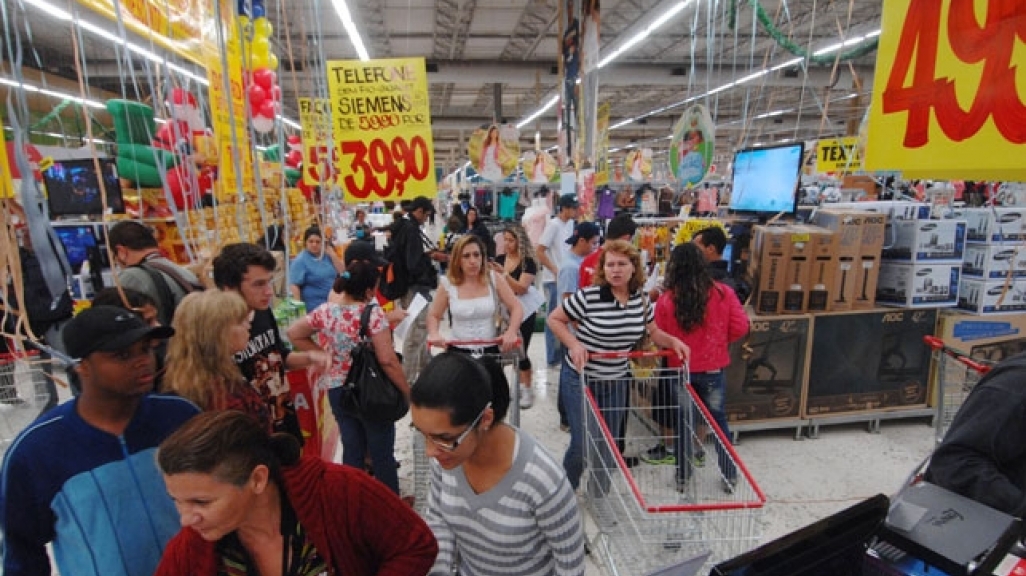Latin America's Middle-Class Growing Pains
Latin America's Middle-Class Growing Pains
The rise of a new consumer class is an historic feat, but it leaves some behind, writes AS/COA's Christopher Sabatini for U.S. News & World Report.
| This article is the first in a new collaboration between AS/COA and World Report, the online foreign affairs analysis section of U.S. News & World Report. Visit World Report for regular coverage of issues affecting Latin America. |
Recently, the World Bank released statistics revealing, for the first time in history, that by 2016 Latin America’s middle classes will outnumber the region’s poor. For a region that has been marked by exclusion, poverty and inequality this is no small matter. The rise of this arriviste class comes from more than two decades of sound macroeconomic policies that have allowed economies to grow, held inflation in the single digits in most countries, reduced public sector deficits, increased public and private sector savings, and contributed to the growth of employment.
Across the region 34.3 percent of the population in Latin America is now in the middle class, according to the World Bank report. The measure it uses (those who earn more than $10 per day), while imperfect, shows the diversity of economies south of the U.S. border. Countries in South America’s Southern Cone have performed the best in terms of the last two decades of social mobility. Among those in the Southern Cone, Brazil excelled, adding 50 million people to the country’s bourgeoisie, and Uruguay and Chile have also done well. In contrast, Central America and Mexico have struggled to reduce poverty.
These changes have implications beyond the laudable and historic reduction of the region’s poor. For one, the growth of the middle class has created a new consumer class with savings, access to credit, and a demand for basic durables, like washing machines and services like banking. For another, the emergence of a politically aware and active middle class has prompted innovations in policymaking and governance, not only at the federal level or in the capital cities, but in Medellin, Colombia; Curitiba, Brazil; and Monterrey, Mexico, to list just a few examples.
But as recent social protests in Chile and Brazil, and a deeper look at the numbers reveal, the region is far from achieving a stable, sunny middle-class status. As with any process of development, Latin America’s positive signals from the past two decades have brought new challenges.
The measure of $10 per day as an income-based metric conceals a number of problems. First, the baseline does not include fundamental services that many in the developed world consider when it comes to middle-class status: access to health care (public or private), availability of quality education and availability of a pension. While economic growth and the expansion of formal employment explain 68 percent of this new middle class, for many, access to a stable social safety net is still lacking.
Second, the rising tide in Latin America has not lifted all boats equally. The region’s history of ethnic and racial exclusion still weighs heavily on even the impressive social mobility that occurred over the past two decades. To cite only a few examples, in Brazil, while 76.4 percent of school age children of European descent are enrolled on secondary school, there are only 65.3 percent of those of primarily Afro or indigenous extraction enrolled. In Chile, 97 percent of families of more European extraction have access to adequate housing, but only 74.4 percent of those of more African or Indigenous extraction have the same benefits. And last there is Mexico, where 44.3 percent of the non-indigenous or Afro-descendant population are working in a formal job with a pension while only 33.1 percent of those indigenous or Afro-Mexican enjoy the same labor status.
This deeper look at the demographics of the growth reveals the root causes of the protests that have wracked countries like Chile and Brazil in the past year. (Protests in Venezuela are different.) Whether in Chile, Brazil or Mexico, many of the newly arrived middle-class families are demanding opportunities for their children that they never had: better, more affordable education and with it more opportunity and a secure, stable safety net that will cushion them in downturns.
And this goes to the heart of the traditional challenges in the region: racial/ethnic lack of access and the endemic inefficiency of the state. The good news is that in many countries, thanks now to decades of democratic elections and governance, policymakers and the state are feeling the heat and rushing to respond. As many of the populations demand better services, they are also calling for more effective accounting of how their swelling tax dollars are spent.
But that’s how democracy and development work; today, they’re at work in Latin America.
This article was originally published in U.S. News & World Report's online opinion section.








